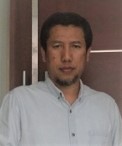to Develop Project Cost Estimation for Oil & Gas Industry in Indonesia
FEATURED PAPER
By Arief Rachman
Jakarta, Indonesia
ABSTRACT
Managing projects that are operating in disrupted and rapidly changing landscapes requires maturity for achieving the project’s objectives. In order to be mature in planning and financial forecasting, the biggest concern is accurate estimating of anticipated costs before committing to the project. Projects are moving so fast, and they have limited time to develop the scope and accurately estimate costs.
Due to the requirements of end-use, we need methods or tools that can help to develop cost estimates easily and quickly. To seek the method or tool for solving the problem, the alternatives are selected and be assessed to define the project cost estimation from the other project in another location or the previous project.
Key words: Cost Indices, Cost Index, City Cost Index, Construction Cost Indices, Construction Cost Index, Project Cost Estimation, Project Cost Index, Project Cost Calculation
INTRODUCTION
In 2019, the synergy of the International Project Management Association (IPMA), Australian Institute of Project Management (AIPM) and Klynveld Peat Marwick Goerdeler (KPMG) undertook the research survey to identify and highlight the challenges of project management. With respondents with nearly 500 companies from 57 countries around the world, the research survey result states that organizations globally continue to find it difficult to deliver projects that meet all objectives around the triangle of time, cost, and scope, along with achieving stakeholder satisfaction. From the survey results, 44% of organizations are likely to deliver projects that meet original goal and business intent, 30% of organizations are likely to deliver projects that are on time, and 36% of organizations are likely to deliver projects that are on a budget. The data indicates that over half of the projects are failed and not give the original goal of the project.
Managing projects that operate in disrupted and rapidly changing conditions requires maturity to achieve project goals. We require maturity in planning and financial forecasting, maturity in hiring, and developing the right talent, maturity in ongoing risk and project management. We also require maturity in contingency management and maturity to build a positive and productive working relationship between project owners and contractors that bring out the best in all parties. Lack of one of the maturity level will cause the project to fail to achieve the goals.
Maturity in planning and financial forecasting, the biggest concern is accurate estimating of anticipated costs before committing to the project. Projects are moving so fast, and they have limited time to develop the scope and accurately estimate costs.
Cost estimating is the forecast power to quantify the cost and price of the resources needed for the magnitude of the scope of investment options, activities, or projects. The goal of cost estimating is to minimize the uncertainty of the estimate given the level and quality of scope definition. The outcome of cost estimating includes both an expected cost and a probabilistic cost distribution.
Generally, the implementation cost estimating process during each phase of the project life cycle as the project scope is defined. At the beginning of the project where the scope definition is rough, the accuracy of the cost estimating is low. The preparation of these cost estimates is used for many strategic business planning purposes, such as market studies, initial feasibility assessments, evaluation of alternative schemes. Besides that, for project screening, project location studies, evaluation of resource needs and budgeting, long-range capital planning, etc.
When the project definition moves to a more detail phase, we need cost estimation with higher accuracy. To prepare the most detailed (Class 1) cost estimate to develop an estimation control system that is used as a final control baseline that monitors all current costs and current resources against variations in costs and parts of changes. The estimated cost can be used to evaluate bid proposals, to support vendor/contractor negotiations, or to evaluate claims and resolve disputes. Typically, it consists of engineering progress from 50% to 100% has completed, and will be complemented by all project engineering and design documentation, and virtually the completion of project implementation and commissioning plans.
More…
To read entire article, click here
How to cite this paper: Rachman, A. (2020). Using Cost Indices to Develop Project Cost Estimation for Oil & Gas Industry in Indonesia; PM World Journal, Vol. IX, Issue II, February. Available online at https://pmworldlibrary.net/wp-content/uploads/2020/01/pmwj90-Feb2020-Rachman-using-cost-indices-for-og-cost-estimation.pdf
About the Author

Arief Rachman
Jakarta, Indonesia
![]()
Arief Rachman is a surface facilities specialist with more than twenty seven years of professional experience in the upstream oil and gas sectors. Currently, he works at the national oil company of Indonesia. His experience in surface facilities maintenance management and upstream projects, such as oil and gas gathering stations, gas sweetening plants, oil and gas pipelines, power plants, electrical transmission and distribution networks, and others upstream projects. He holds a bachelor’s degree in Electrical Engineering from Sepuluh Nopember Institute of Technology (ITS) and completing master’s degree in Gas Management at the University of Indonesia. He is attending a distance learning mentoring course, under the tutorage of Dr. Paul D. Giammalvo, CDT, CCE, MScPM, MRICS, GPM-m Senior Technical Advisor, PT Mitrata Citragraha, to attain Certified Cost Professional certification from AACE International.
Arief lives in Jakarta-Indonesia and can be contacted at arief.rachman.sby@gmail.com









